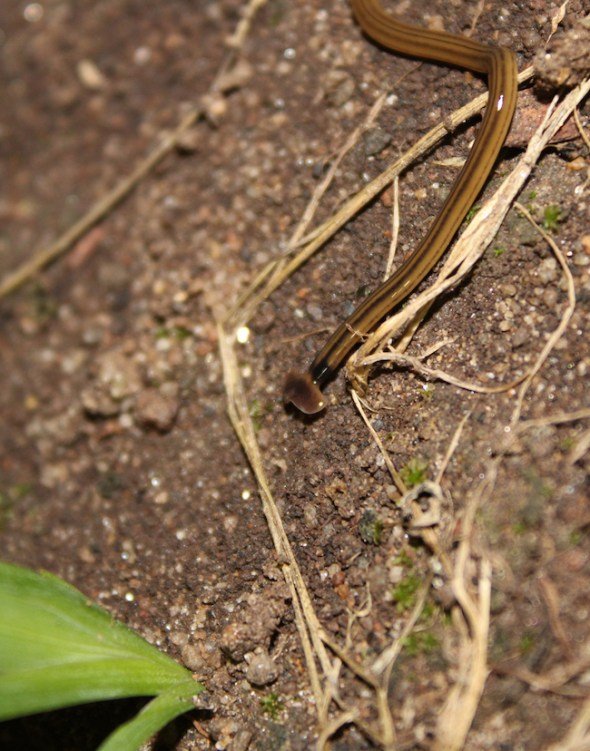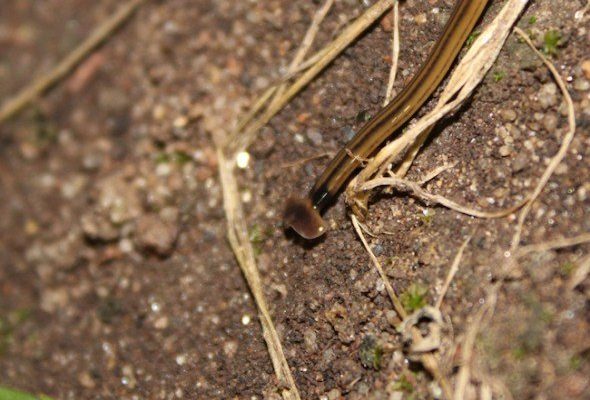
Think of handling hammerhead worms like dealing with a delicate art project. You want to be careful, use the right tools, and avoid making a mess. And just like with any art project, having the right supplies—like gloves and tools—makes all the difference in keeping both you and the environment safe. So, whether you’re a curious gardener or just someone who stumbled upon one of these bizarre critters in your yard, I’ve got you covered with all the info you’ll need!
What Are Hammerhead Worms?
Hammerhead worms, also known as Bipalium, are a type of flatworm recognizable by their distinctive hammer-shaped heads. These terrestrial predators can grow quite long—some stretching over a foot! They’re typically brown or black with a velvety texture, making them visually intriguing yet somewhat unsettling. If you’re wondering where you might encounter these fellows, they thrive in moist environments, which means gardens and damp soil are prime real estate for them.
Their presence can be alarming, especially since they’re known to eat earthworms. This can disrupt the healthy balance in your soil. But in order to handle them, it’s good to understand a little about their biology. Hammerhead worms are not dangerous to humans, but they do possess a toxin that can be harmful to other small creatures. So, it’s best to approach these worms with care.
Why You Should Handle Them Carefully
You might be thinking, “What’s the big deal? They’re just worms!” But here’s the thing: hammerhead worms can negatively impact local ecosystems. By predating on beneficial organisms like earthworms, they can alter the soil structure and nutrient levels. Additionally, while they won’t bite you, their toxin can cause skin irritation if you’re not careful. That’s why knowing how to safely handle them is crucial.
When you come across a hammerhead worm, it’s essential to avoid direct contact. Using gloves and tools not only provides a physical barrier between you and the worm, but also protects the worm from unnecessary stress and harm. They may look tough, but they’re quite delicate, and mishandling can damage them.
Choosing the Right Gloves
When it comes to safely handling hammerhead worms, the right gloves are your best friend. You’ll want a pair that is both protective and comfortable. Here are a few options to consider:
- Latex gloves: These are a popular choice because they offer a good balance of flexibility and protection. Just make sure you’re not allergic to latex!
- Nitrile gloves: If you prefer something latex-free, nitrile gloves are a fantastic option. They’re durable and resistant to punctures, making them perfect for handling worms.
- Gardening gloves: Look for gloves that are thicker and have some grip. They can also protect your hands from dirt and moisture while giving you a good hold on the worm.
Ultimately, you want gloves that allow you to feel secure while keeping direct contact to a minimum. Make sure to check for any tears or damages before using them. It’s just like checking your gear before a hike; you want everything in top condition!
Tools for Safely Handling Hammerhead Worms
Besides gloves, having the right tools can make a world of difference when dealing with hammerhead worms. Here are some handy tools to consider:
- Tongs: A pair of long tongs can help you pick up the worm without getting too close. This adds an extra layer of safety for both you and the worm.
- Small shovel or spade: If you need to relocate the worm, a small shovel can help you scoop it up gently and place it in a suitable area.
- Catching container: Use a small container like a bucket or an old plastic tub to temporarily house the worm while you decide what to do next.
Using these tools can help minimize the stress on the worm and make sure you’re handling it safely. Just imagine trying to catch a slippery fish without the right gear. It’s not going to end well!
How to Handle Hammerhead Worms Safely
Alright, let’s get into the nitty-gritty of safely handling a hammerhead worm! Following these steps will ensure you’re prepared for any encounter:
1. Gear Up: First, make sure you have your gloves on and your tools at the ready. Remember, safety first!
2. Approach Gently: Move slowly toward the worm. Sudden movements can scare or stress it out. Think of it like approaching a shy puppy.
3. Using Tongs or Shovel: If you’re using tongs, gently slip them around the worm, being careful not to squeeze too hard. If you opt for a shovel, slide it under the worm smoothly and lift it carefully.
4. Transfer to Container: Place the worm in your catching container gently. If you’re relocating it, remember to choose a damp area away from your garden where it can thrive without causing trouble.
5. Clean Up: Once you’re done, clean your tools and gloves. Dispose of any worms or debris safely to prevent spreading them.
Following these steps can make all the difference in ensuring a safe and low-stress experience for everyone involved.
What to Do After Handling Hammerhead Worms
Now that you’ve successfully dealt with a hammerhead worm, what’s next? It’s essential to reflect on your experience and clean up properly. Here are a few tips for after you’ve handled one:
- Wash Your Hands: Even if you wore gloves, it’s a good idea to wash your hands thoroughly afterward. It’s just a smart practice!
- Monitor the Area: Keep an eye on the spot where you found the worm. If you notice more hammerhead worms, you might want to take similar action to manage them.
- Educate Others: If you have family members or neighbors who might encounter these worms, share what you’ve learned. The more people know about safe handling, the better!
Understanding what to do after your encounter will help you feel more confident next time, and it keeps everyone in your ecosystem safe.
Handling hammerhead worms doesn’t have to be a scary experience. With a little knowledge and the right tools, you can safely manage these unusual creatures while protecting our precious ecosystems. Remember to gear up with gloves and use gentle tools like tongs or small shovels to handle them responsibly.
Taking care of our environment means being aware of what creatures are part of it—hammerhead worms included! By using this simple guide, you’ll be ready to handle these worms with ease and confidence. So next time you stumble across one, just take a deep breath, put on your gloves, and remember the impact you can have in ensuring a healthy environment for everyone.

